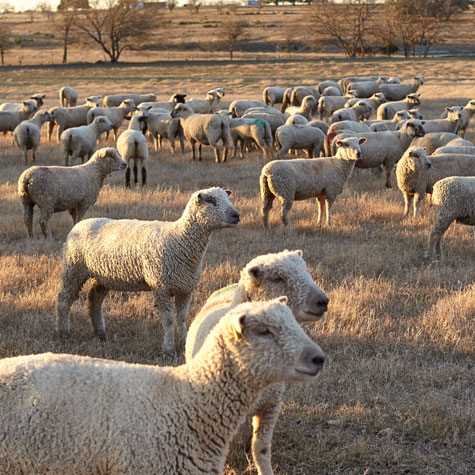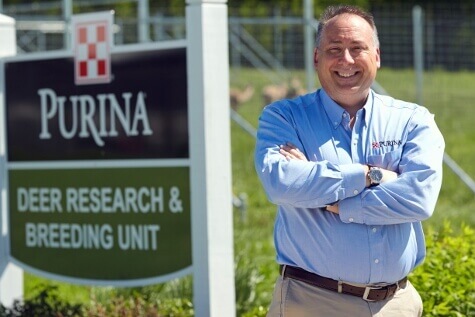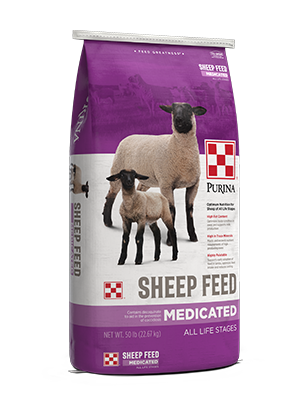
Four Questions to Ask About Coccidiosis in Sheep
Wellness : Health
Coccidiosis is one of the most common and damaging sheep diseases, particularly young lambs. Coccidia are protozoa that cause damage to the animal’s intestinal tract so that food is not absorbed well.
Learn how to manage and prevent coccidiosis in sheep by answer the following questions:What causes coccidiosis in sheep?
Coccidiosis is caused by parasitic protozoa in the genus Eimeria. The Eimeria are host-specific and those that infect cattle will not infect sheep or goats. The life cycle of coccidia is complex with its reproduction occurring in the animal’s intestinal cells. USDA reported in 2011 that 34 percent of sheep operations had seen coccidiosis in their flock.1
Conditions that increase sheep’s susceptibility include extreme weather changes, an unclean environment and stressful events such as transportation, sheep nutrition deficiencies, feed changes, weaning, illness, parasites and lactation.
Due to the damage of the cells lining the intestines, the primary symptoms of coccidiosis in sheep is sheep diarrhea, which may be foul smelling and contain mucus and blood. Sheep diarrhea may have a dark tarry appearance and, in severe cases, large blood clots can be seen. The hindquarters and tail may be covered with manure. Additionally, the performance of sheep will surfer due to loss of appetite, weakness, abdominal pain and fatigue. Some animals may die before showing signs of coccidosis if they are exposed to a large amount of coccidia in the sheep environment. Even though sheep may recover, there could be long-lasting effects due to intestinal damage that cause general unthriftiness, decreased growth, inferior sheep milk production and a greater predisposition to other diseases.
Coccidiosis in sheep can be prevented using medications called coccidostats. They work to help decrease the shedding of coccidia through the feces. Two medications available to help prevent coccidiosis are decoquinate and lasalocid, an ionophore. In 2011, USDA reported that 40 percent of U.S. sheep operations used a coccidiostat.1
Preventive medications must be used at least 30 days before lambing to prevent ewes from infecting their lambs and at least 30 days prior to weaning to help protect lambs during this stressful event. Additionally, the use of a coccidiostat at the right time in the production cycle does not replace proper hygiene but complements it. If an outbreak does occur, following the veterinarian’s prescribed program will ensure that the medications used will be effective.
In addition to clean bedding, drinking water should be fresh and clean and waters and feed troughs should be disinfected if possible, to reduce potential ingestion of coccidia. Waters and feeders should be designed to prevents sheep from walking in and defecating in the troughs.
A proper sheep nutrition program is also a key factor in maintaining a productive flock. Learn more about Purina’s line of lamb and sheep feed.
1 USDA. 2013. Sheep 2011 Part III: Health and Management Practices on U.S. Sheep Operations, 2011. USDA APHIS VS National Animal Healthy Monitoring System.
Coffey, L. 2014. Coccidiosis: Symptoms, Prevention, and Treatment in Sheep, Goats, and Calves. ATTRA Sustainable Agriculture. Available at https://attra.ncat.org/attra-pub/viewhtml.php?id=483. Accessed 8-Jun-17.
Metzger, M. 2013. Coccidiosis can kill kids and lambs. Michigan State University Extension. Available at: http://msue.anr.msu.edu/news/coccidiosis_can_kill_kids_and_lambs. Accessed 8-Jun-17.
Smith, M.C. and D.M. Sherman. 1994. Lippincott Williams and Wilkins, Philadelphia, PA. p. 312-318.
Learn how to manage and prevent coccidiosis in sheep by answer the following questions:
What causes coccidiosis in sheep?
Coccidiosis is caused by parasitic protozoa in the genus Eimeria. The Eimeria are host-specific and those that infect cattle will not infect sheep or goats. The life cycle of coccidia is complex with its reproduction occurring in the animal’s intestinal cells. USDA reported in 2011 that 34 percent of sheep operations had seen coccidiosis in their flock.1Conditions that increase sheep’s susceptibility include extreme weather changes, an unclean environment and stressful events such as transportation, sheep nutrition deficiencies, feed changes, weaning, illness, parasites and lactation.
What are the symptoms of coccidiosis in sheep?
The symptoms observed are dependent on the species of Eimeria, how many are present, the animal’s age, production status, overcrowding, stress level and environmental factors. Immunity develops over time, so young animals are more susceptible than older animals. Adult animals can have coccidia, but not show symptoms.Due to the damage of the cells lining the intestines, the primary symptoms of coccidiosis in sheep is sheep diarrhea, which may be foul smelling and contain mucus and blood. Sheep diarrhea may have a dark tarry appearance and, in severe cases, large blood clots can be seen. The hindquarters and tail may be covered with manure. Additionally, the performance of sheep will surfer due to loss of appetite, weakness, abdominal pain and fatigue. Some animals may die before showing signs of coccidosis if they are exposed to a large amount of coccidia in the sheep environment. Even though sheep may recover, there could be long-lasting effects due to intestinal damage that cause general unthriftiness, decreased growth, inferior sheep milk production and a greater predisposition to other diseases.
How to treat coccidiosis in sheep?
A veterinarian should be consulted to develop a treatment program for coccidiosis in sheep. Following the veterinarian’s directions during an outbreak is critical to help the sheep flock overcome the disease.Coccidiosis in sheep can be prevented using medications called coccidostats. They work to help decrease the shedding of coccidia through the feces. Two medications available to help prevent coccidiosis are decoquinate and lasalocid, an ionophore. In 2011, USDA reported that 40 percent of U.S. sheep operations used a coccidiostat.1
Preventive medications must be used at least 30 days before lambing to prevent ewes from infecting their lambs and at least 30 days prior to weaning to help protect lambs during this stressful event. Additionally, the use of a coccidiostat at the right time in the production cycle does not replace proper hygiene but complements it. If an outbreak does occur, following the veterinarian’s prescribed program will ensure that the medications used will be effective.
How to manage the sheep environment?
The best prevention for coccidiosis in sheep is to create an environment that is clean and dry with reduced stress. If ewes lamb in pens, keeping the bedding dry and the ewe’s udder and teats clean are critical in reducing the lamb’s chance of ingesting coccidia when nursing. On pasture, provide shelter and prevent feces from accumulating where ewes and lambs congregate.In addition to clean bedding, drinking water should be fresh and clean and waters and feed troughs should be disinfected if possible, to reduce potential ingestion of coccidia. Waters and feeders should be designed to prevents sheep from walking in and defecating in the troughs.
A proper sheep nutrition program is also a key factor in maintaining a productive flock. Learn more about Purina’s line of lamb and sheep feed.
1 USDA. 2013. Sheep 2011 Part III: Health and Management Practices on U.S. Sheep Operations, 2011. USDA APHIS VS National Animal Healthy Monitoring System.
Coffey, L. 2014. Coccidiosis: Symptoms, Prevention, and Treatment in Sheep, Goats, and Calves. ATTRA Sustainable Agriculture. Available at https://attra.ncat.org/attra-pub/viewhtml.php?id=483. Accessed 8-Jun-17.
Metzger, M. 2013. Coccidiosis can kill kids and lambs. Michigan State University Extension. Available at: http://msue.anr.msu.edu/news/coccidiosis_can_kill_kids_and_lambs. Accessed 8-Jun-17.
Smith, M.C. and D.M. Sherman. 1994. Lippincott Williams and Wilkins, Philadelphia, PA. p. 312-318.


.png?width=300&height=430&ext=.png)
